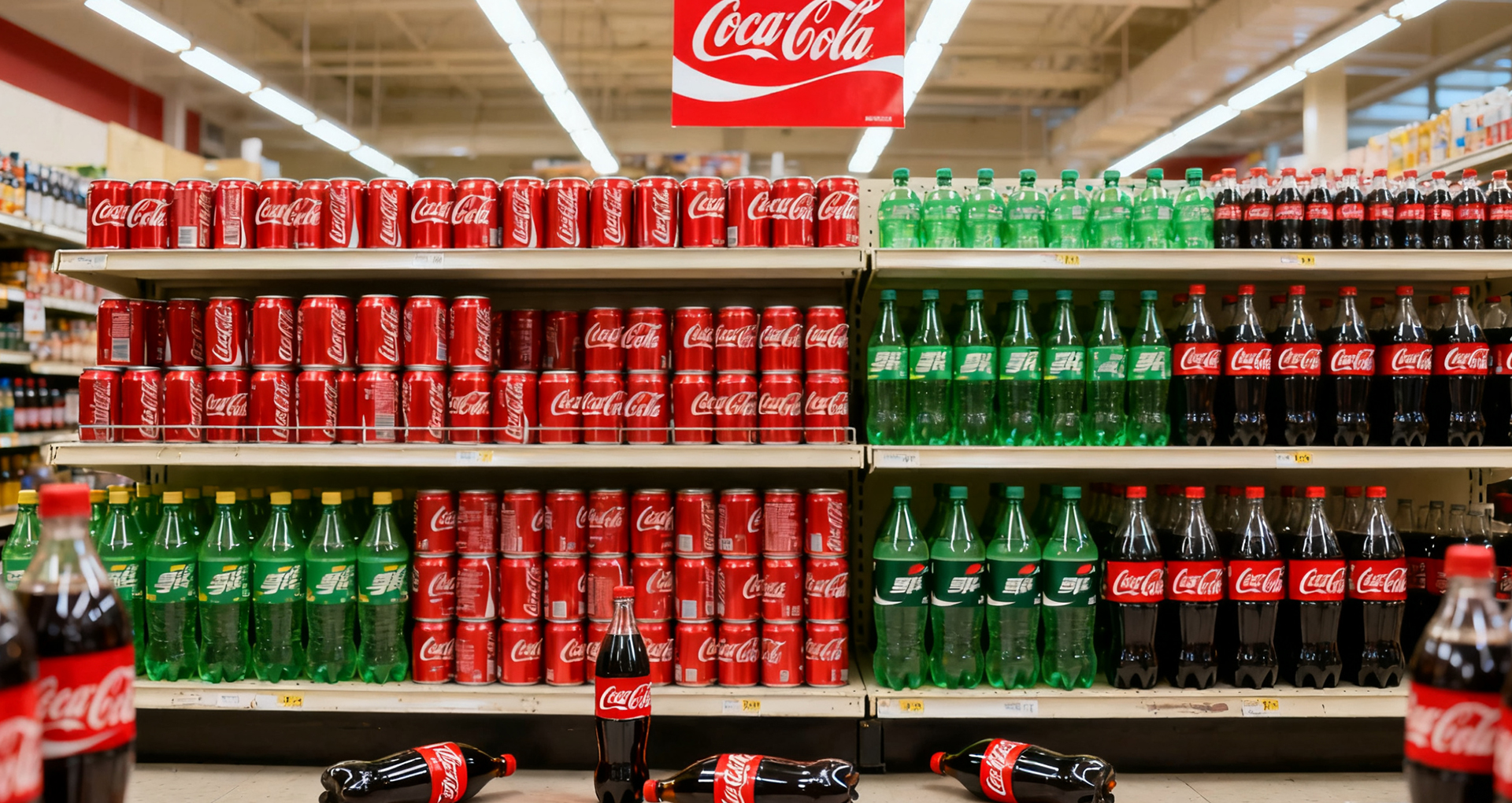As of September 2025, Coca-Cola ranks 323rd in the Fortune Global 500 and 14th in the Kantar BrandZ Top 100 Global Brands (ranking first in the food and beverage category), with a brand value of 119.979 billion US dollars.

On the 2024 Fortune Global 500 list, Walmart ranked first with $572.7 billion in revenue, while The Coca-Cola Company ranked 331st with $45.754 billion in revenue, lagging behind PepsiCo, which ranked 123rd with $91.471 billion. However, in the same year's Kantar BrandZ Top 100 Most Valuable Global Brands ranking, Coca-Cola jumped 7 places to 10th, with its brand value increasing by 8%, making it one of the few consumer brands that can remain competitive in both scale and emotional value. This seemingly contradictory ranking phenomenon reveals the profound differences between the evaluation systems of traditional manufacturing and modern consumer brands.
From the perspective of revenue scale, Coca-Cola's ranking reflects the characteristics of the fast-moving consumer goods industry. Although its annual revenue of $45.754 billion is only half of PepsiCo's, behind this figure is its huge distribution network built in 192 countries around the world. In 2024, Coca-Cola added 250,000 new sales points and 600,000 refrigeration equipment, focusing on layout in emerging markets in the Asia-Pacific and Latin America. This channel density has given it an absolute advantage in the carbonated beverage sector. Data shows that Coca-Cola's share of the global carbonated beverage market is as high as 44%-48%, more than 1.4 times that of Pepsi-Cola (32%), and it even accounts for about 60% of the Chinese market, forming significant market dominance. This focus stands in sharp contrast to PepsiCo's diversified strategy that includes snack businesses, which also explains the gap in revenue scale between the two.
The brand value ranking better reflects Coca-Cola's core competitiveness. As one of the most recognizable brands in the world, Coca-Cola has built a unique "symbol of happiness" through continuous emotional marketing. From the hugging scenes in Olympic advertisements to the cultural implantation of the Santa Claus image, its brand has transcended the product itself and become a globally shared cultural code. This mental monopoly was verified in the 1985 "New Coke" incident - when the company tried to change the classic formula, strong consumer protests forced the company to restore the original formula, demonstrating the strength of the emotional contract between the brand and consumers. The 11% growth in global sales of sugar-free products in 2024 further proves that its brand power can effectively drive the acceptance of product innovation.
Under the impact of the healthy consumption trend, Coca-Cola's ranking fluctuations also reflect the transformation efforts of traditional giants. Although carbonated beverages remain its core business, the company is responding to market changes through a full-category layout. In the Chinese market, Coca-Cola not only provides carbonated drinks but also expands into categories such as fruit juices, tea, ready-to-drink coffee, and packaged water. The five-year strategic cooperation with Chimelong Group is an embodiment of this strategy. Supply chain upgrades also support the transformation. The construction of the Shaanxi relocation project and the intelligent production base in the Guangdong-Hong Kong-Macau Greater Bay Area have not only reduced logistics costs but also improved production capacity support for healthy drinks. This "dual-track" strategy enables it to gradually evolve towards healthiness while maintaining its traditional advantages.
Coca-Cola's ranking story also reveals the multiple dimensions of modern business evaluation systems. In traditional revenue rankings, it may not be as eye-catching as diversified enterprises, but it still maintains a global leading position in indicators such as brand value and market share, which better reflect long-term competitiveness. Buffett's investment logic of holding Coca-Cola stocks for a long time stems from a deep understanding of this brand moat - when a brand can occupy an irreplaceable position in the minds of global consumers, its commercial value will eventually surpass short-term revenue fluctuations.
Looking forward to the future, with the improvement of the ESG evaluation system, Coca-Cola's ranking may face new variables. Although its sustainable development initiatives have not been disclosed in detail, packaging innovation and carbon footprint reduction have become industry focuses. If it can improve its environmental performance while maintaining brand value, this century-old enterprise may achieve new breakthroughs in future comprehensive rankings and continue to write a business legend that emphasizes both scale and value.